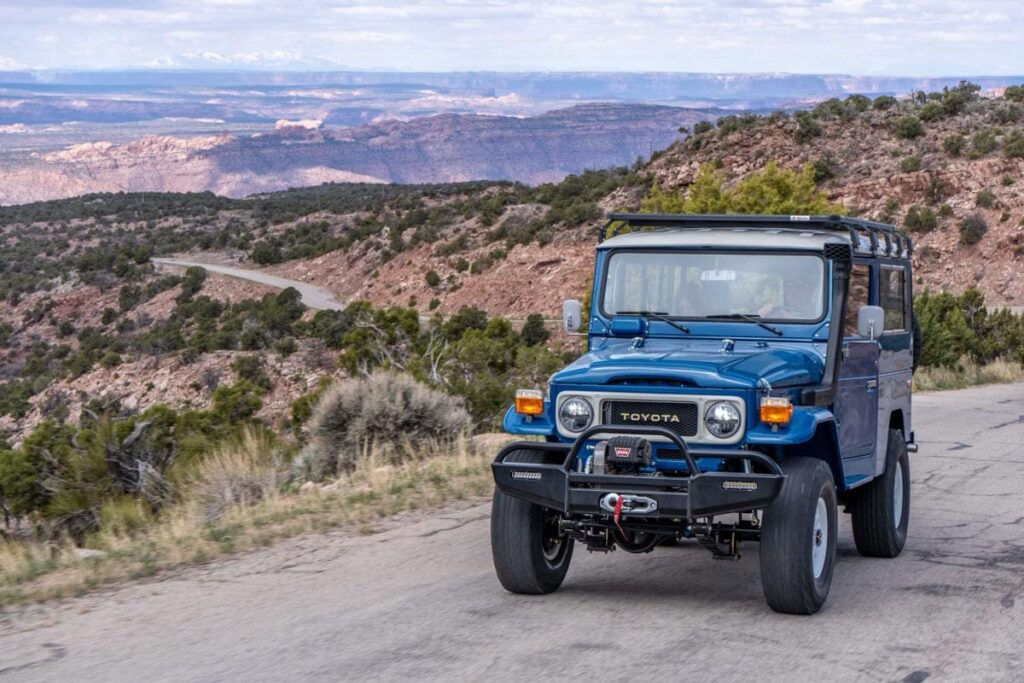
Our philosophy on restoring 40 series Land Cruisers
At Proffitt’s, we’ve been restoring Toyota FJ40, FJ45, and other 40 series Land Cruisers for over 24 years. Our restorations have come a long way in every way possible over the years. The cumulative knowledge and skill sets we’ve developed have helped us shape and hone not only the methods and materials we use, but also the process we follow to restore these timeless 4X4s. When this much experience is focused on one product, it results in a very specific way of doing things. That’s where our 40 series restorations have landed. We have our way, it’s very thorough, and we believe it’s the only proper way of going about it.
In the early years of Proffitt’s Cruisers, we considered almost any paint work on an FJ40 “a restoration” (many still do today, unfortunately). We offered 3 stages of refurbishment: Stage 1 (more or less an exterior paint job), Stage 2 (More extensive cosmetically, but the body was never separated from the frame), and Stage 3 (a full body-off refinish). Over a decade ago, we eliminated the Stage 1 refurbishments from our menu. They just were becoming impossible to do without taking too many shortcuts. More recently, we eliminated the Stage 2 option. Regarding Stage 2, even though it’s possible to make the entire inside and outside of the 40 series look new, there are still too many untouched areas to be considered a proper restoration.
Now we only offer a full Stage 3 restoration on FJ40s, FJ43s, FJ45s, and other models in the series. We believe that the Stage 3, full body-off level is the only way to really give the vehicle the attention that it needs and deserves. If you don’t go all the way, there’s always a compromise, no, a thousand compromises, that bring the quality of the restoration way down.
Here are some examples to illustrate what I mean: First of all, no matter what, 40 series Land Cruisers will have rust. Some a little, and some, A LOT. All rust requires proper metal work to repair. That means cutting out all or part of panels and replacing the rusty metal with new metal. In almost every situation, the result of this is that 2 sides of the repair area need to be properly refinished, The outside, and “the other side”. The other side will always be under the vehicle or on the inside of a panel that can’t be refinished without further disassembly. It has to be taken apart, all the way apart.
Next, and without getting too complicated…Every part of a 40 series is attached to some other part(s). On the body, the door handle, linkage for the door handle, a window regulator, glass, weatherstripping, and more are all attached to the door; the door is bolted to the tub, the tub is mounted to the frame, and so on. Mechanically, the drive shaft is bolted to the pinion flange, the flange is bolted to the pinion shaft, there is a dust sleeve in between, and that assembly (part of a more complex series of parts called the third member) is bolted to the axle housing. All of these parts have different coatings, finishes, textures, and looks. The resulting contrast is natural and beautiful. To preserve that, all of the parts I mentioned, and tens of thousands of other parts just like it, must be separated and refinished individually to maintain (and enhance) that look. Painting over ANYTHING that is bolted to something else is just wrong.
This practice of paying attention to every detail and our pursuit of continuous improvement has really shaped our brand at Proffitt’s Resurrection Land Cruisers. We believe that our 40 series Toyota Land Cruiser restorations and resto-mods are second-to-none in the industry. Enjoy the gallery of our restorations on our website, and be sure to check out all of the details in the pictures to see what I mean.